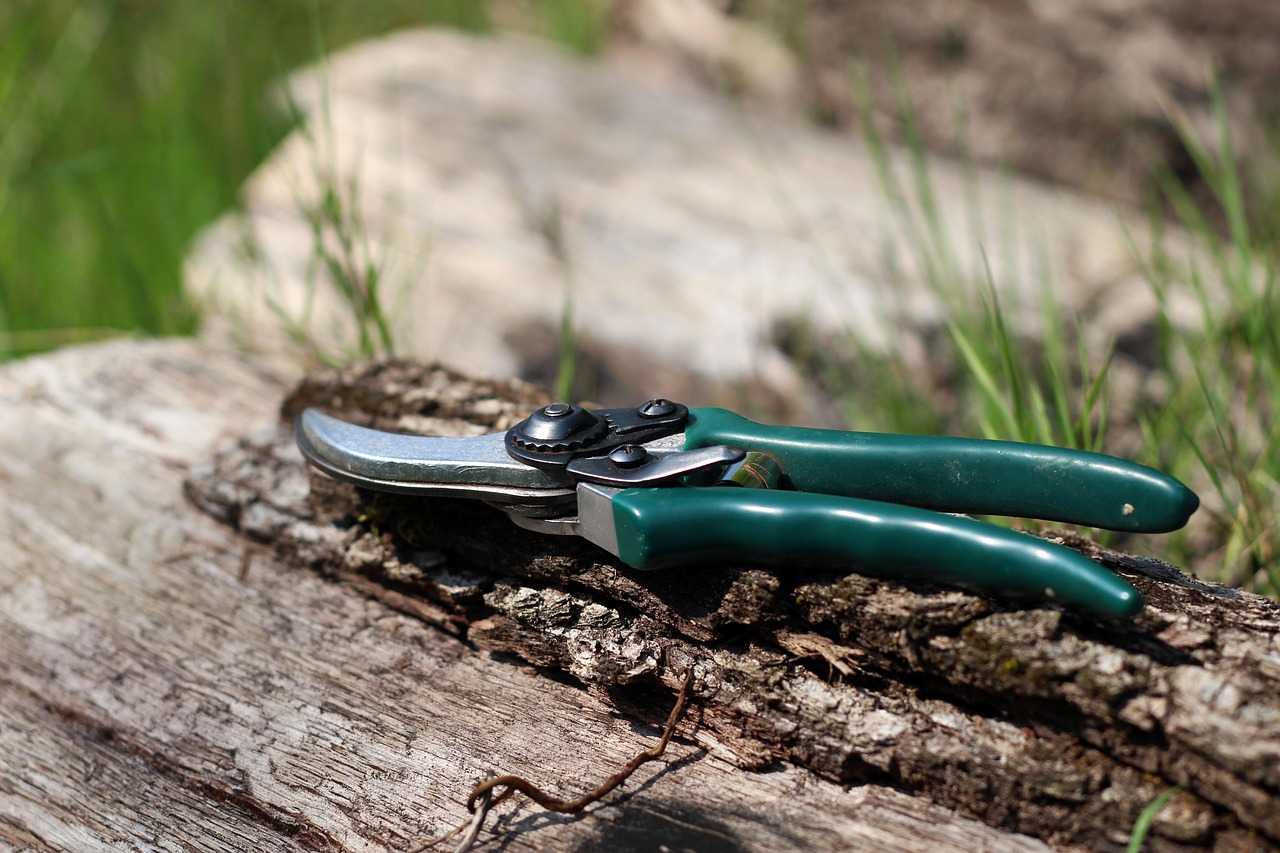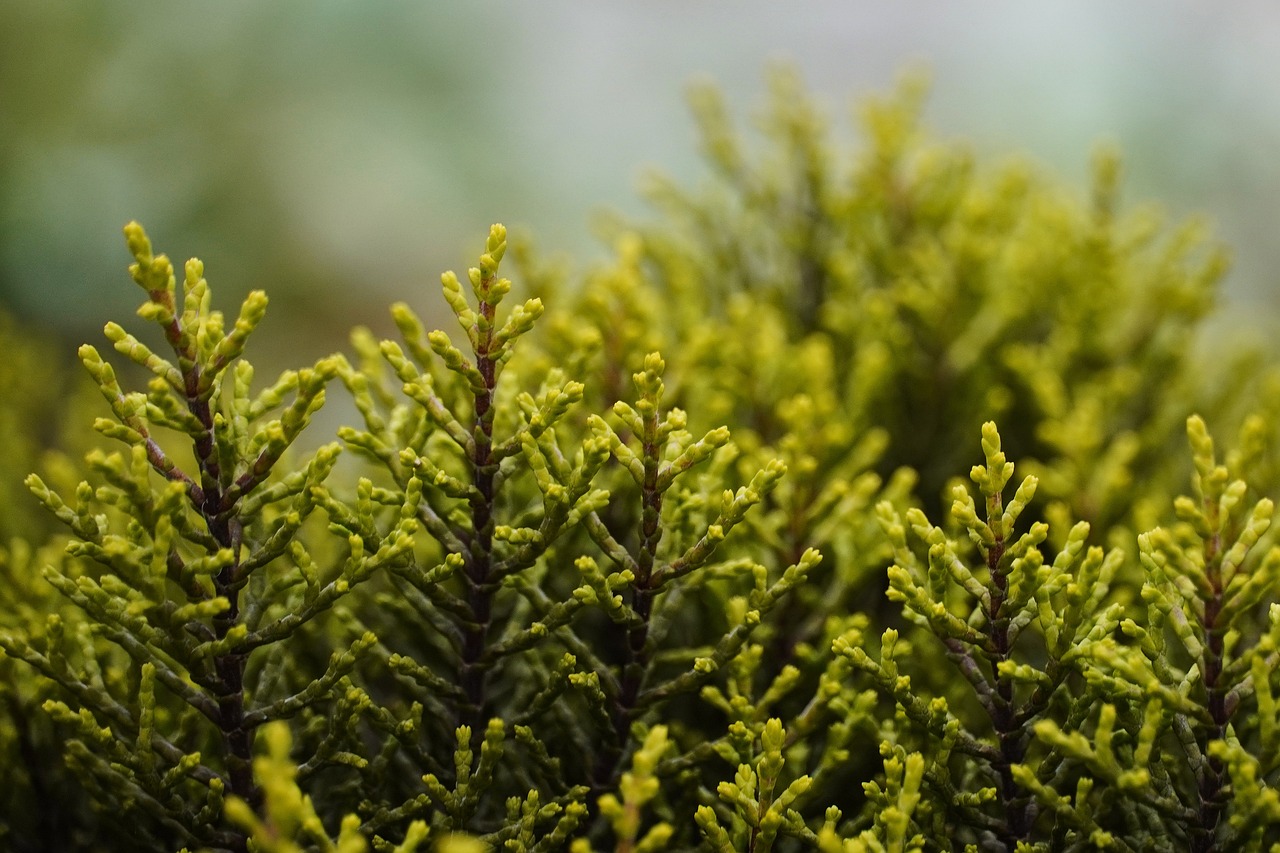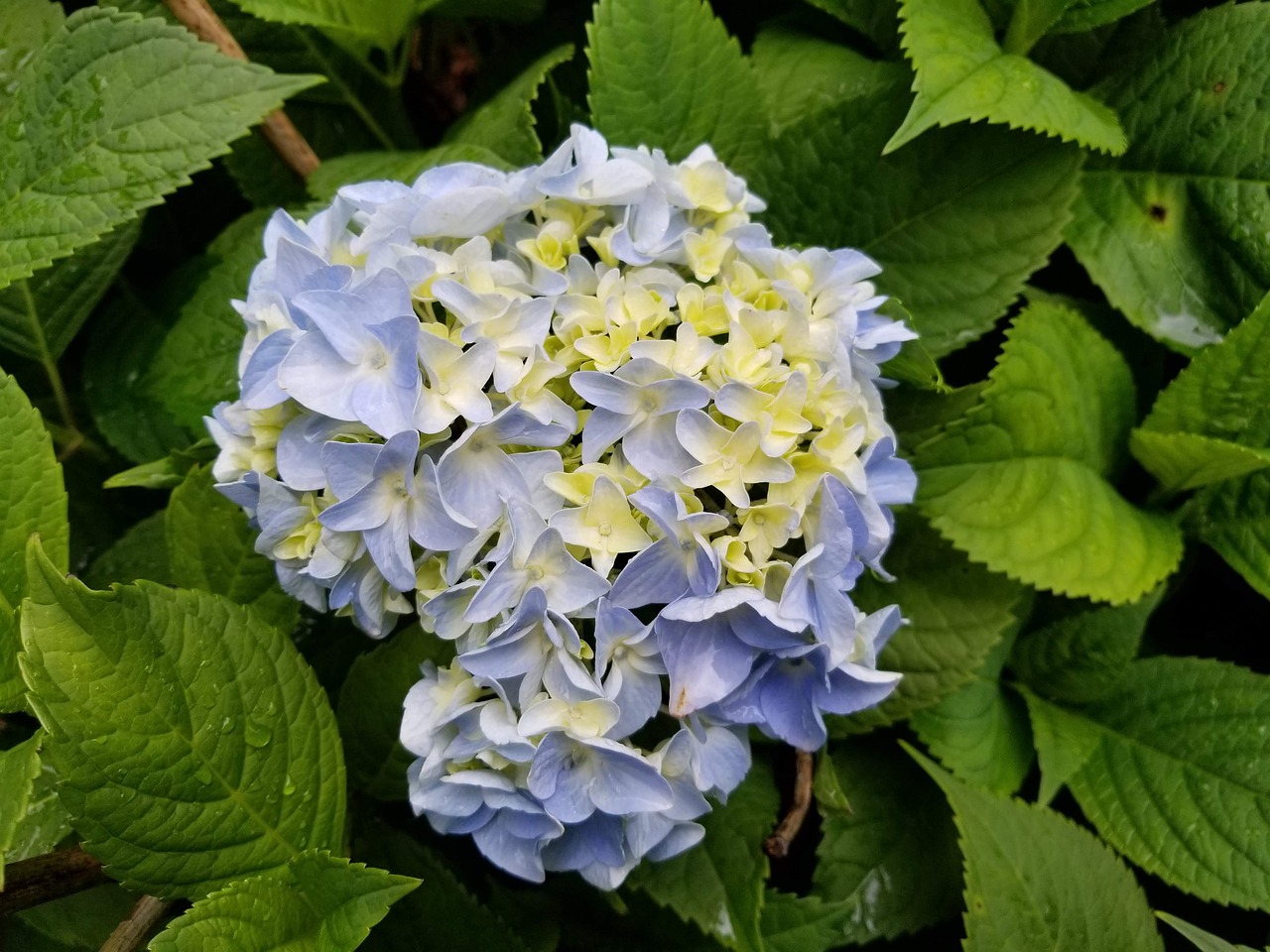Safe pruning practices for shrubs and garden bushes involve using clean, sharp tools, understanding the right time for pruning, and knowing the specific growth habits of each plant. Proper techniques promote healthy growth and minimize damage to the plants.
Pruning is an essential part of maintaining healthy shrubs and garden bushes. It involves removing specific parts of a plant, such as branches or stems, to improve its shape, increase airflow, and encourage new growth. When done correctly, pruning can enhance the aesthetic appeal of your garden while promoting the overall health of your plants.

Understanding when and how to prune is crucial for success. Different plants have distinct growth cycles and requirements. For instance, some shrubs bloom on old wood, while others flower on new growth. Knowing these differences will help you make informed decisions about when to prune.
Understanding Pruning Techniques
There are several pruning techniques that can be applied depending on the type of shrub and the desired outcome. Here are some common methods:
- Thinning: This technique involves removing entire stems or branches to improve air circulation and light penetration within the plant.
- Heading back: This method cuts back a portion of the stem to promote bushier growth. It is often used on flowering shrubs.
- Pinching: Pinching is a gentle method that removes the tips of young shoots to encourage branching.
- Rejuvenation: This technique involves cutting back old, overgrown shrubs to encourage new growth from the base.
Choosing the right technique depends on the type of shrub you are working with and your goals for its growth. For example, if you want a fuller appearance, heading back may be more appropriate than thinning.

Essential Tools for Pruning
Having the right tools is vital for effective and safe pruning. Here are some essential tools every gardener should have:
| Tool | Description | Usage |
|---|---|---|
| Pruning Shears | Handheld scissors designed for cutting smaller branches. | Best for precise cuts on stems up to ¾ inch in diameter. |
| Loppers | Long-handled shears that provide leverage for cutting thicker branches. | Ideal for branches between ¾ inch to 1½ inches in diameter. |
| Saw | A small hand saw or pruning saw for larger branches. | Used for branches thicker than 1½ inches in diameter. |
| Gloves | Protective gear to shield your hands from thorns and cuts. | Always wear gloves for safety during pruning. |
| Bypass Pruners | A type of pruning shear with two blades that pass by each other. | Best for making clean cuts on live stems. |
Investing in quality tools will make the pruning process more efficient and enjoyable. Always keep your tools clean and sharp. This practice minimizes damage to plants and ensures that cuts heal quickly.
When to Prune Your Shrubs
The timing of pruning can significantly impact plant health and flowering. Generally, there are two main categories based on blooming cycles:

- Spring-blooming shrubs: These should be pruned immediately after they finish blooming in late spring or early summer. Examples include lilacs and azaleas.
- Summer-blooming shrubs: Prune these in late winter or early spring before new growth begins. Examples include butterfly bushes and summer-flowering spireas.
Pruning at the correct time helps ensure that you do not remove potential blooms or disturb the natural growth cycle of the plant. Observing the specific needs of your plants will lead to more successful outcomes in your garden.
Safety Considerations While Pruning
Safety is paramount when engaging in any gardening activity, including pruning. Here are some important safety tips:
- Always wear protective gear, including gloves and safety goggles.
- Be mindful of your surroundings. Watch out for power lines, uneven ground, and other hazards.
- Use ladders safely if pruning tall shrubs. Ensure stability before climbing.
- Keep children and pets at a safe distance while pruning.
By following these safety precautions, you can enjoy a productive pruning session without unnecessary risks. A well-planned approach will result in healthier plants and a more beautiful garden space.

Common Mistakes to Avoid While Pruning
Pruning can be a straightforward task, but several common mistakes can undermine the health of your shrubs and garden bushes. Awareness of these pitfalls is essential for achieving the best results.
- Pruning at the Wrong Time: As mentioned previously, timing is critical. Pruning at the wrong time can remove buds and flowers.
- Over-Pruning: Taking off too much foliage can stress the plant and inhibit its growth. Always prune with moderation.
- Neglecting Tool Maintenance: Using dull or dirty tools can cause jagged cuts that are more susceptible to disease.
- Ignoring Plant Specifics: Each shrub has its unique needs. Not all plants respond well to the same pruning techniques.
- Making Topping Cuts: Topping, or cutting back the tops of plants indiscriminately, can lead to weak growth and an unattractive shape.
Avoiding these mistakes will help you maintain healthy plants and a thriving garden environment. Understanding the needs of your specific shrubs is essential for successful pruning practices.
Understanding Plant Growth Habits
Different shrubs exhibit various growth habits. Familiarizing yourself with these habits will assist in determining the best pruning techniques and timing. Here are some common growth habits:
- Deciduous Shrubs: These shrubs lose their leaves in the fall. Examples include hydrangeas and forsythias. They generally benefit from pruning in late winter or early spring.
- Evergreen Shrubs: These retain their foliage year-round. Examples include boxwoods and hollies. Prune lightly to maintain shape and health, typically in late spring.
- Flowering Shrubs: Some shrubs flower on old wood, while others bloom on new growth. Knowing this distinction is crucial for proper pruning.
Understanding these growth habits will guide you in making the right pruning decisions for each type of shrub in your garden.
Step-by-Step Pruning Guide
Following a structured approach to pruning can simplify the process and lead to better results. Here’s a step-by-step guide to help you through the pruning process:
- Assess the Plant: Before you begin, take a moment to evaluate the shrub’s overall health. Look for dead or diseased branches, as well as areas that may be overcrowded.
- Choose the Right Time: Refer to the growth habits discussed earlier to determine when is the best time for your specific shrub.
- Gather Your Tools: Assemble all necessary tools, ensuring they are clean, sharp, and ready for use.
- Start with Dead or Diseased Wood: Remove any dead, damaged, or diseased branches first. This helps improve airflow and reduces the risk of disease spreading.
- Thin Out Overcrowded Areas: Identify branches that are crossing or crowding each other. Thin these out to allow light and air to penetrate the center of the plant.
- Shape the Plant: Use heading cuts judiciously to shape the shrub, ensuring you maintain its natural form.
- Clean Up: After finishing, clean your tools to prevent any disease transmission between plants.
By following these steps, you will ensure that your pruning efforts are effective and beneficial for your shrubs.
The Role of Fertilization Post-Pruning
After pruning, it’s beneficial to consider how fertilization can support regrowth and health. Here are some tips regarding fertilization following pruning:
- Timing: Wait about a month after pruning before applying fertilizer. This allows the plant to recover from stress first.
- Type of Fertilizer: Use a balanced fertilizer or one specifically formulated for shrubs. This will encourage healthy growth without overwhelming the plant.
- Application Method: Follow the instructions on the fertilizer package for application rates and methods. Over-fertilization can be harmful.
Adequate fertilization after pruning supports new growth and ensures that your plants thrive in their environment.
Pest and Disease Management
Pests and diseases can pose significant threats to shrubs, especially after they have been pruned. Implementing management strategies is vital for maintaining plant health:
- Inspect Regularly: After pruning, keep an eye on your plants for any signs of pests or disease.
- Use Organic Pesticides: If you notice signs of infestation, consider using organic pest control methods to minimize harm to beneficial insects.
- Avoid Overwatering: Excess moisture can lead to fungal diseases, so ensure proper drainage around your shrubs.
By actively managing pests and diseases, you can protect your plants from further stress and promote a healthy garden ecosystem.
Seasonal Pruning Guides
Understanding the best practices for pruning during different seasons is crucial for the health and aesthetics of your shrubs. Timing directly impacts how well the plants respond to pruning and their subsequent growth patterns.
Spring Pruning
Spring is a vital time for pruning many shrubs, particularly those that bloom in summer. Here are some key points to consider:
- Timing: Prune in late winter or early spring before new growth begins. This allows you to remove any dead or damaged branches without interfering with new buds.
- Focus on Dead Growth: Start by removing any dead or diseased wood. This will enhance airflow and encourage healthy new growth.
- Encourage Shape: Shape the shrub to promote a balanced appearance, ensuring that you maintain its natural form.
Spring pruning is particularly beneficial for shrubs like hydrangeas and butterfly bushes, which will flourish when pruned correctly during this season.
Summer Pruning
Summer is another excellent time for pruning, especially for those plants that bloom in the spring. Here’s what to consider:
- Timing: Prune once flowering has finished. This is typically from late spring through summer.
- Remove Spent Blooms: Deadheading, or removing spent flowers, encourages further blooming and keeps the plant looking tidy.
- Shape Maintenance: Use summer pruning to control growth and maintain the desired shape of the shrub.
Summer pruning can be particularly effective for flowering shrubs like roses and azaleas, enhancing their beauty while promoting vigorous growth.
Fall Pruning
Fall is often considered a less favorable time for pruning due to the onset of colder weather. However, certain practices can still be beneficial:
- Avoid Heavy Pruning: Instead of heavy pruning, focus on minor maintenance tasks, such as removing dead or weak branches.
- Prepare for Winter: Trim back any overgrown branches to prevent damage from snow or ice accumulation during winter months.
- Plant Health: Ensure that your plants are healthy going into winter by avoiding excessive stress during the fall season.
Fall maintenance can be particularly beneficial for evergreens and some deciduous shrubs that require minimal shaping before winter.
Winter Pruning
Winter is often seen as a dormant period for many plants and can be an appropriate time for specific types of pruning:
- Timing: Late winter, before the growing season begins, is ideal for pruning many deciduous shrubs.
- Structural Pruning: Focus on structural pruning to shape your shrubs while they are dormant. This helps them grow in a balanced manner once spring arrives.
- Remove Damaged Wood: Address any damage that may have occurred due to winter weather by removing broken or damaged branches.
Winter pruning can encourage robust growth in the spring and help ensure healthy shrubs as they emerge from dormancy.
Specialized Pruning Techniques
Some shrubs require specialized pruning techniques to promote optimal growth and flowering. Understanding these techniques can enhance your gardening skills.
Coppicing
Coppicing involves cutting back a shrub to ground level to encourage new growth. This technique is often used for shrubs that produce multiple stems, such as willows or hazels. Here are some important points:
- When to Coppice: Best done in late winter to early spring when plants are dormant.
- Aim for Renewal: This method rejuvenates older shrubs and promotes vigorous new growth each season.
Crown Reduction
Crown reduction is a method used to reduce the height of a shrub while maintaining its natural shape. This technique is particularly useful for large shrubs that may outgrow their space.
- Selective Cutting: Choose specific branches to cut back, ensuring you maintain the overall structure of the plant.
- Aim for Balance: Always aim to create a balanced appearance; avoid cutting all branches on one side, which can lead to an imbalanced look.
The Importance of Post-Pruning Care
Caring for your shrubs after pruning is equally important as the pruning process itself. Proper post-pruning care ensures that your plants recover efficiently and thrive.
- Watering: After pruning, provide adequate water to help the plant recover from stress. Ensure the soil remains consistently moist but not waterlogged.
- Mulching: Apply mulch around the base of shrubs to retain moisture, suppress weeds, and regulate soil temperature.
- Monitoring Growth: Keep an eye on new growth following pruning. Address any signs of distress or disease promptly.
A proactive approach to post-pruning care will contribute significantly to the long-term health and vitality of your shrubs and garden bushes.
Advanced Pruning Techniques for Specific Shrubs
In addition to the basic pruning practices, some shrubs and bushes benefit from advanced techniques that can enhance their growth and flowering. Understanding these specialized methods can help you become a more skilled gardener.
Espalier
Espalier is a technique used to train shrubs or trees to grow flat against a wall or fence. This method not only saves space but also creates an artistic display in your garden. Key points to consider include:
- Choosing the Right Plant: Certain species, like apple trees and some flowering shrubs, are well-suited for espalier.
- Training the Growth: Use wires or trellises to guide the branches into the desired shape. Prune regularly to maintain the form.
- Seasonal Maintenance: Prune during the appropriate season for your plant type, typically in late winter or early spring.
Espalier can add visual interest to your garden while optimizing space. It requires commitment and regular maintenance to achieve the desired results.
Layering
Layering is a propagation technique that involves bending a branch of a shrub so it touches the ground and develops roots while still attached to the parent plant. Here’s how to do it:
- Selecting a Branch: Choose a healthy, flexible branch from the shrub.
- Bend and Secure: Bend the branch down to the ground, ensuring it stays in contact with the soil. Use pins or rocks to keep it in place.
- Wait for Roots: Allow time for roots to develop, which can take several months. Once rooted, you can cut it from the parent plant.
This technique not only allows you to propagate new plants but also encourages fuller growth in the existing shrub.
Common Problems and Solutions in Pruning
Even with careful practice, you may encounter challenges during pruning. Being aware of common issues and their solutions can help you address them effectively.
Brown Leaves or Wilting
If your shrub exhibits brown leaves or wilting after pruning, consider these potential causes:
- Water Stress: Ensure you are providing adequate water after pruning. Newly pruned plants may require more moisture as they recover.
- Pest Infestation: Inspect for pests that could be causing stress. Treat infestations promptly using appropriate pest control methods.
Excessive Growth
If your shrubs are growing too vigorously after pruning, you may need to adjust your approach:
- Fertilization Balance: Avoid over-fertilizing, as this can lead to excessive leaf growth at the expense of flowers. Use balanced fertilizers appropriately.
- Pruning Frequency: Consider adjusting your pruning frequency and technique if you consistently see vigorous growth.
Addressing these common problems promptly can help maintain the health and aesthetics of your garden plants.
Final Thoughts
Safe pruning practices for shrubs and garden bushes involve understanding the specific needs of each plant, utilizing proper techniques, and maintaining vigilant post-pruning care. By following guidelines on timing, tools, and specialized techniques, you can promote healthy growth and enhance the beauty of your garden.
Remember that gardening is a journey of learning and adaptation. Each season provides new opportunities for growth, not only for your plants but also for your skills as a gardener. Embrace the process, enjoy the transformation of your garden, and take pride in nurturing your shrubs and bushes to thrive in their environment.
By implementing these safe pruning practices, you will foster a vibrant outdoor space that flourishes with life and beauty throughout the seasons. Happy gardening!
